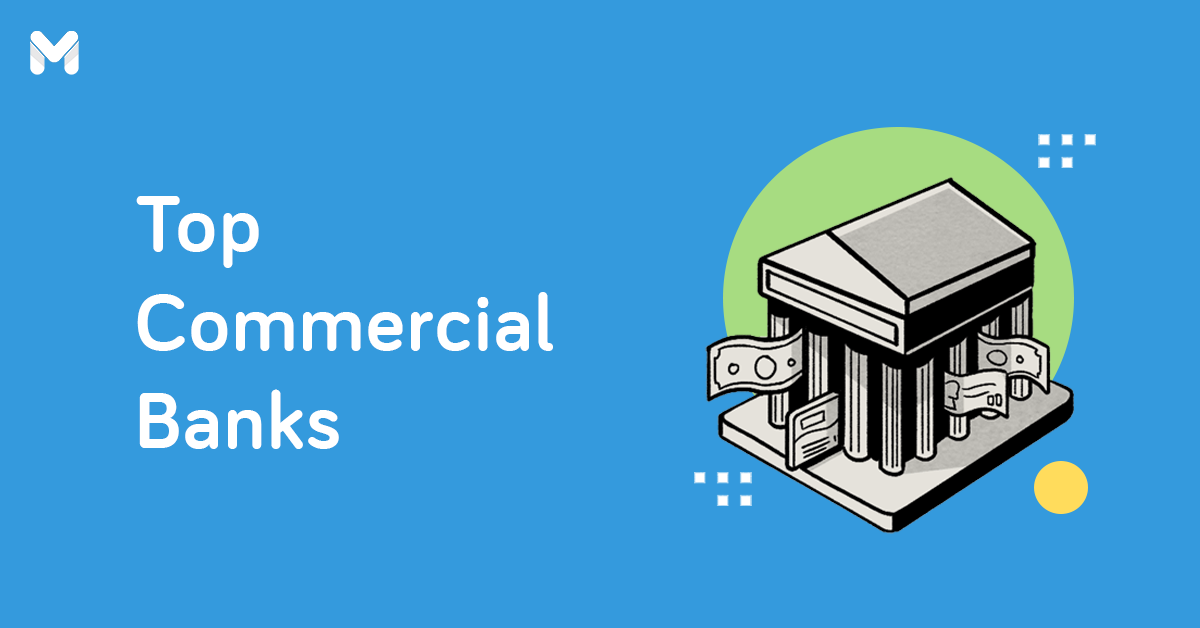Planning to open a bank account soon? Among the most important things to know beforehand are your options for types of bank accounts in the Philippines.
Should you have a savings account or a checking account? If you're getting a savings account, should you go with an ATM card or a passbook? Or is a time deposit the better choice?
Before you make that crucial decision, understand first the key differences between the common types of bank accounts. This will help you determine which account type fits your needs and purpose best.
What is a Bank Account?
Bank accounts include a broad range of financial products such as credit cards, prepaid cards, loans, and investments. But in the Philippines, bank accounts are usually associated with deposit accounts that allow customers to keep their money for saving or spending, manage funds, and perform a variety of financial transactions.
Having a bank account is more secure than storing cash under the mattress. All deposit accounts in the country are insured with the Philippine Deposit Insurance Corporation (PDIC) for up to ₱500,000 per depositor per bank.[1] So when the bank where you have an account closes down, you'll get to recover your money fully or partially.
Ironically, 44% of adult Filipinos still prefer to keep their money at home rather than place it in a bank. Lack of funds, financial literacy, and trust in the Philippines are among the top reasons some Pinoys remain unbanked.
So if you'll open a bank account, you're making a smart financial decision!
What are the 4 Types of Bank Accounts in the Philippines?
Whether you're opening your first bank account or exploring other options, here are the types of bank accounts to consider.
1. Savings Account

A savings account is a good place to keep your savings, extra cash, or emergency fund. It allows you to deposit cash and checks as well as withdraw funds, but you can't issue checks.
Savings accounts are usually the first bank accounts that Filipinos open because of their low initial deposit and maintaining balance. You can open savings account for as low as ₱100. Some banks don't even require an initial deposit and a maintaining balance at all. This is why a savings account is ideal for kids, teenagers, and adults with no stable income.
However, savings accounts pay low interest with annual rates of less than 1%. There's also a penalty fee ranging from ₱200 to ₱1,000 if your balance goes below the bank's required maintaining balance for more than 30 days.
You'll be charged an ATM service fee when you make a balance inquiry or withdraw cash from the ATM of another bank. Banks also impose transaction limits per day and per single transaction.
Read more:
- 6 Best Banks in the Philippines for Opening a Savings Account
- Where to Open a Savings Account with No Maintaining Balance?
- Grow Your Money with High-Interest Savings Accounts in the Philippines
2. Checking Account

A checking account, also called a current account, is a basic deposit account that's different from a savings account. For one, it costs higher to open and maintain checking accounts than savings accounts. But like savings accounts, current accounts come with an ATM or debit card that can be used for withdrawals and payments.
Paper checks are becoming less popular in this digital age. Still, they're relevant in the Philippines. You're likely to open a checking account if you have a personal loan, auto loan, or housing loan that requires repayments through post-dated checks.
If you'll have a current account, consider using it also for your regular transactions such as rent, bills, and tuition payments or managing your business expenses. This type of bank account in the Philippines is also a safe and convenient option for paying a large sum of money, such as down payments and other amounts in six digits, which can't be paid in cash, with a credit card, or using an e-wallet.
3. Time Deposit Account
Looking for a low-risk investment that pays higher interest than a typical savings account? A time deposit is a perfect choice, especially for first-time or conservative investors who need to store money they won't be spending any time soon.
Opening a time deposit involves keeping your funds in the account for a fixed period of one month to five years. You won't have access to your money until that period is over.
Early withdrawal is possible, but it comes with a penalty that can exhaust everything you've earned. The bank invests and lends your deposited funds. In return, you'll be paid a higher interest after the account's maturity.
Time deposit interest rates in the Philippines can go higher than 1%. The higher the amount you deposit and the longer you hold it in the bank, the higher the interest you'll get.
4. Foreign Currency Account

A dollar currency allows you to withdraw in peso or dollar, so you can opt to cash out in the currency with the better exchange rate. Having a dollar account is also good for your financial portfolio. You get to diversify your savings because it earns interest in dollars.
Most foreign currency bank accounts in the Philippines come with a passbook and are typically available in the following currencies:
- Australian Dollar
- British Pound
- Canadian Dollar
- Chinese Yuan
- Euro
- Hong Kong Dollar
- Japanese Yen
- Singapore Dollar
- US Dollar
While a peso account is more convenient (no need to go to a money changer), a foreign currency account makes better sense if you often transact in US dollar or any non-local currency.
Foreign currency bank accounts are also a great option for the following people:
- OFWs and their families who want an easy and secure way to remit and receive money from abroad through bank deposits
- Frequent travelers
- Entrepreneurs (especially online business owners) with international customers and suppliers
- Anyone who makes and receives payments in a foreign currency
FAQs on Types of Bank Accounts in the Philippines
1. Can I open a joint bank account in the Philippines?
Yes, you can open a joint account in the country. Business partners, associations, and couples (whether married or unmarried) commonly use a joint account for convenience and transparency in managing their shared income and expenses.
Held under more than one name, joint bank accounts can be savings accounts, checking accounts, or time deposits.
Joint accounts come in two types: joint "and" and joint "or" accounts. A joint “and” account needs the signature of both account holders for withdrawals. On the other hand, a joint "or" account allows co-owners to withdraw anytime without the other person's signature.
Only a passbook (no ATM card) is issued for "and" accounts, while "or" accounts provide an ATM for all account holders.
2. What are the joint account rules in the Philippines?
You can find the complete guidelines on handling joint accounts in the amended miscellaneous rules on deposits under Section 276 of the Bangko Sentral ng Pilipinas' (BSP) Manual of Regulations for Banks (MORB).[2]
One of the main rules that joint accountholders in the Philippines must remember is that any of the depositors (regardless if the account is an "and" or "or" type) may deposit money in the account individually or even without the authority of the other depositor/s named in the joint account.
3. Is a payroll account a type of savings account?
No. Although savings accounts share some similarities with payroll accounts like ATM withdrawals, these two types of bank accounts are entirely different.
Wondering about the main difference between payroll account vs savings account? Employers open payroll accounts to pay employees their salaries. Meanwhile, savings accounts are opened for the purpose of saving or safekeeping one's money.
Unlike savings accounts, payroll accounts don't require an initial deposit and maintaining balance. However, if the account holder resigns, their payroll account will be converted to a regular savings account that might have a maintaining balance. Such a bank account can still be used (with the same account number) after resignation as long as it's active.
4. Which is a better savings account: an ATM or a passbook?
When you open a savings account, the bank staff will ask you to choose between an ATM account and a passbook account.
Go with ATM savings account if you'll use it mainly for spending and need easy access to funds using an ATM or debit card. ATM accounts also have lower maintaining balance and initial deposit requirements than passbook accounts.
A passbook savings account is the better choice if you won't touch your money as often. Bank accounts with passbooks are ideal for Pinoys who prefer traditional banking where transactions and account balances are recorded in a small notebook. This makes passbook accounts safer than ATM accounts, as there's no risk of ATM skimming and other banking scams.
Final Thoughts
The different types of bank accounts in the Philippines cater to different needs and budgets. Before you open an account, carefully consider which bank account type will work best for you.
Sources:
- [1] Deposit Insurance (PDIC official website)
- [2] Draft Amendments to Miscellaneous Rules on Deposit (BSP, September 2021)











